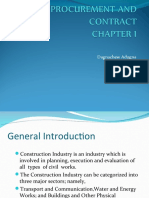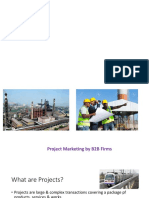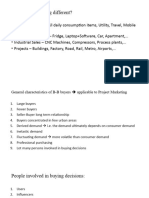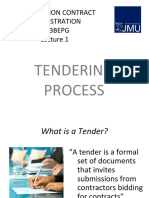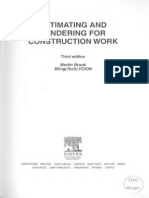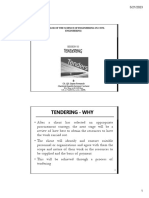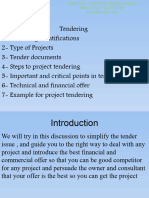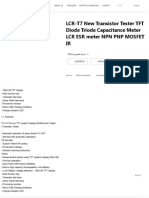0% found this document useful (0 votes)
8 views8 pagesTendering Components and Process - AMR
This report outlines the key components and processes involved in tendering, including essential documents like the Bill of Quantities, design drawings, and technical specifications. It details the roles of various teams, pricing strategies, contract types, and the structured submission process necessary for successful tendering. Additionally, it discusses evaluation and awarding stages, emphasizing the importance of thorough assessments and clear communication throughout the process.
Uploaded by
kaushal36299Copyright
© © All Rights Reserved
We take content rights seriously. If you suspect this is your content, claim it here.
Available Formats
Download as PDF, TXT or read online on Scribd
0% found this document useful (0 votes)
8 views8 pagesTendering Components and Process - AMR
This report outlines the key components and processes involved in tendering, including essential documents like the Bill of Quantities, design drawings, and technical specifications. It details the roles of various teams, pricing strategies, contract types, and the structured submission process necessary for successful tendering. Additionally, it discusses evaluation and awarding stages, emphasizing the importance of thorough assessments and clear communication throughout the process.
Uploaded by
kaushal36299Copyright
© © All Rights Reserved
We take content rights seriously. If you suspect this is your content, claim it here.
Available Formats
Download as PDF, TXT or read online on Scribd
/ 8








